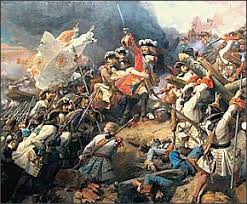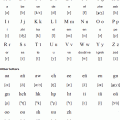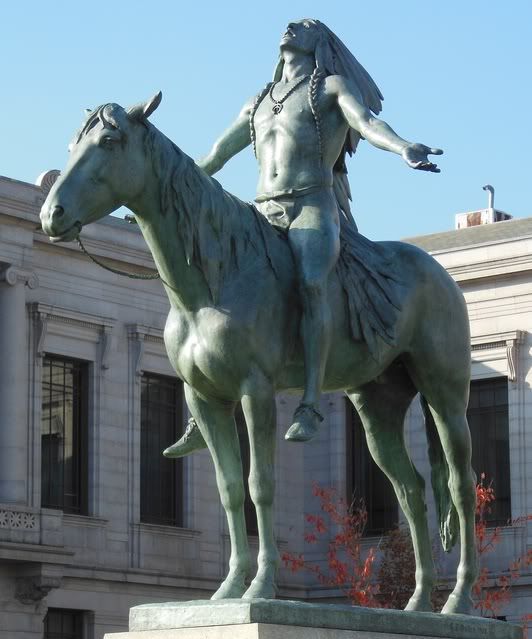
In 1702 a war broke out between England and France which would later be known as Queen Anne’s War, the War of Spanish Succession, and the French and Indian War. While the war was fought primarily in Europe, in North America it became a struggle between the European powers for control of the continent. While it was a war between European powers, many Indian nations were drawn into the war over the next decade as allies to the Europeans.
Following the death of Spanish King Charles II in late 1700 a war broke out regarding who should succeed him to the Spanish throne. Initially, the war was limited to Europe, but in 1702 England declared war on France and Spain and with this the conflict expanded to North America.
In North America, the English colonies were primarily along the Atlantic coast from the Carolinas to New England. While there was some English settlement as far inland as the Appalachians, for the most part the English did not venture into the interior of the continent.
On the northern fringes of the English colonies there were conflicts with the French who occupied the area along the St. Lawrence down to the Great Lakes. The French, who had adopted Indian bark canoes, freely travelled the waterways of the interior trading with the Indians. The French often spoke the Indian languages, married Indian women, lived in the Indian villages, and participated in Indian ceremonies.
The conflict between the French and English colonists was in part over control of the Indian fur trade. On the other hand, there was also religious conflict. The French were Catholic while the English, particularly those in New England, were not only Protestant they were Catholic-hating Protestants. The New English colonists viewed the French Catholics as papist atheists who were doing Satan’s work.
With the outbreak of war between the French and the English, the Abenaki, allies of the French, resumed their raids on the frontier settlements of New England. Most of the other Indian nations in Maine simply wanted to avoid the war and the French interpreted this as a betrayal of traditional loyalties.
In New York, both the French and the English sought to keep the Iroquois neutral in the conflict so that the fur trade would not be interrupted. From an Iroquois perspective, by remaining neutral and trading with both of the European powers, they could continue their dominant position in the fur trade.
In 1703, the French sent 230 of their Micmac and Mohawk allies to raid against the English in Maine. The English increased their anti-Indian rhetoric. In Northampton, Massachusetts, the Reverend Solomon Stoddard urged his parishioners to use dogs to “hunt Indians as if they were bears” and he told his congregation that Indians “act like wolves and are to be dealt with like wolves.”
In 1704, French soldiers together with Abenaki and Mohawk warriors attacked Deerfield, Massachusetts, killing 50 of the English colonists and abducting 100 more. The English responded to the raid by attacking Indian villages in the interior.
The French-allied Indians also attacked the English at Haverhill in Massachusetts, Oyster River and Dover in New Hampshire, and York in Maine.
In 1705, the English colonists attacked and burned the Abenaki village of Norridgewock.
In 1706, the French sent two Jesuit priests to contact the mission populations in Maine and keep them active in the war against the English. The Indians, however, were already engaged in peace talks with the English.
John Williams published his book The Redeemed Captive in 1707 which is an account of his capture at Deerfield in 1704. His story of salvation from heathenism (Indian) and Catholicism (French) made the book a bestseller.
In 1709, the British Governor met with the Iroquois Five Nations (except for the Seneca) in New York to renew the Covenant Chain (the traditional agreement of peace and trade). The British told the Iroquois that they wanted them to take part in a military expedition against French Canada. The Iroquois agreed to provide the British with 150 Mohawk, 105 Oneida, 100 Cayuga, and 88 Onondaga warriors. However, the English war ships never arrived to supply the invasion and the attack fizzled out before it began.
In 1710, the New England colonists sent a formal Indian delegation composed of three Mohawk and one Mahican to England. The New England colonists wanted to persuade Queen Anne to support the colonial plans for an invasion of New France. In England the Indian delegation was called the “Four Kings.” In their meeting with the Queen, the Four Kings, well-coached by their patrons, asked for assistance. They told Queen Anne the proposal would bring England economic benefits. They also asked the Queen for Protestant missionaries and presented her with several belts of wampum. However, the war ended before the Queen could provide her support for the invasion.
In 1713, Queen Anne’s War between the French and English formally ended with the Treaty of Utrecht. Under this treaty, the Iroquois were considered British subjects and trade was permitted with the western Indians by both the British and the French. As a result of this treaty, the French began to establish a series of military and trading posts in the Upper Great Lakes area.




I read it with utmost interest but the war between French and English people was a blind arrow in the air. It sought just hatred in the people’s mind.